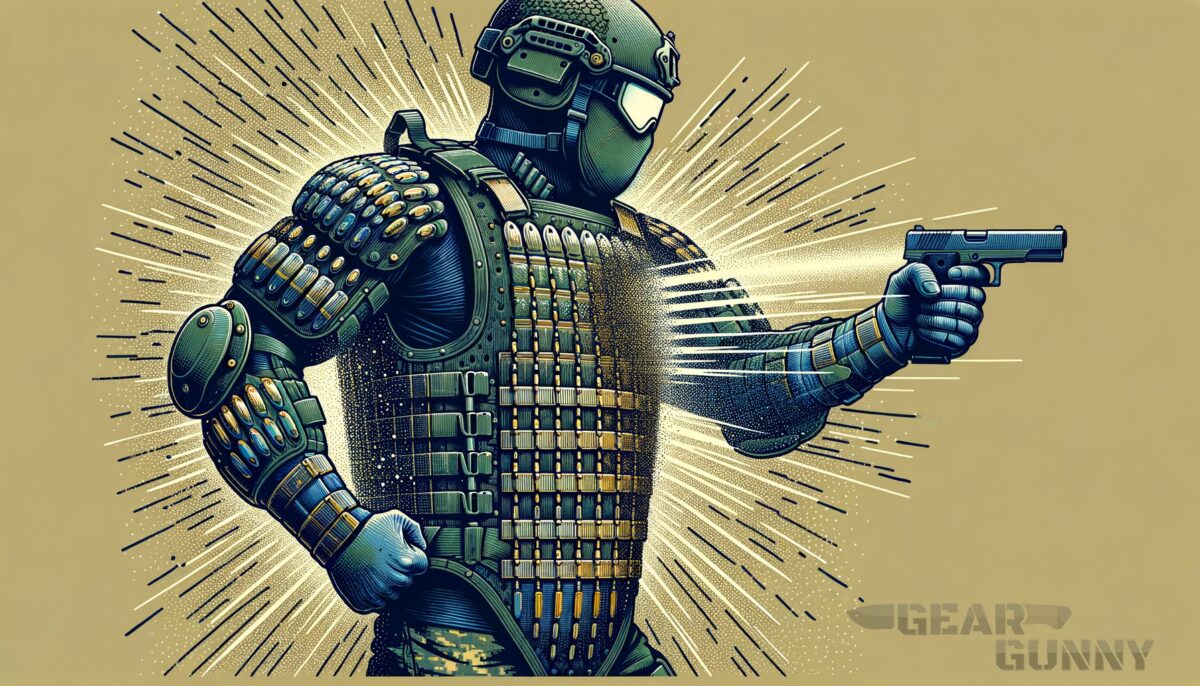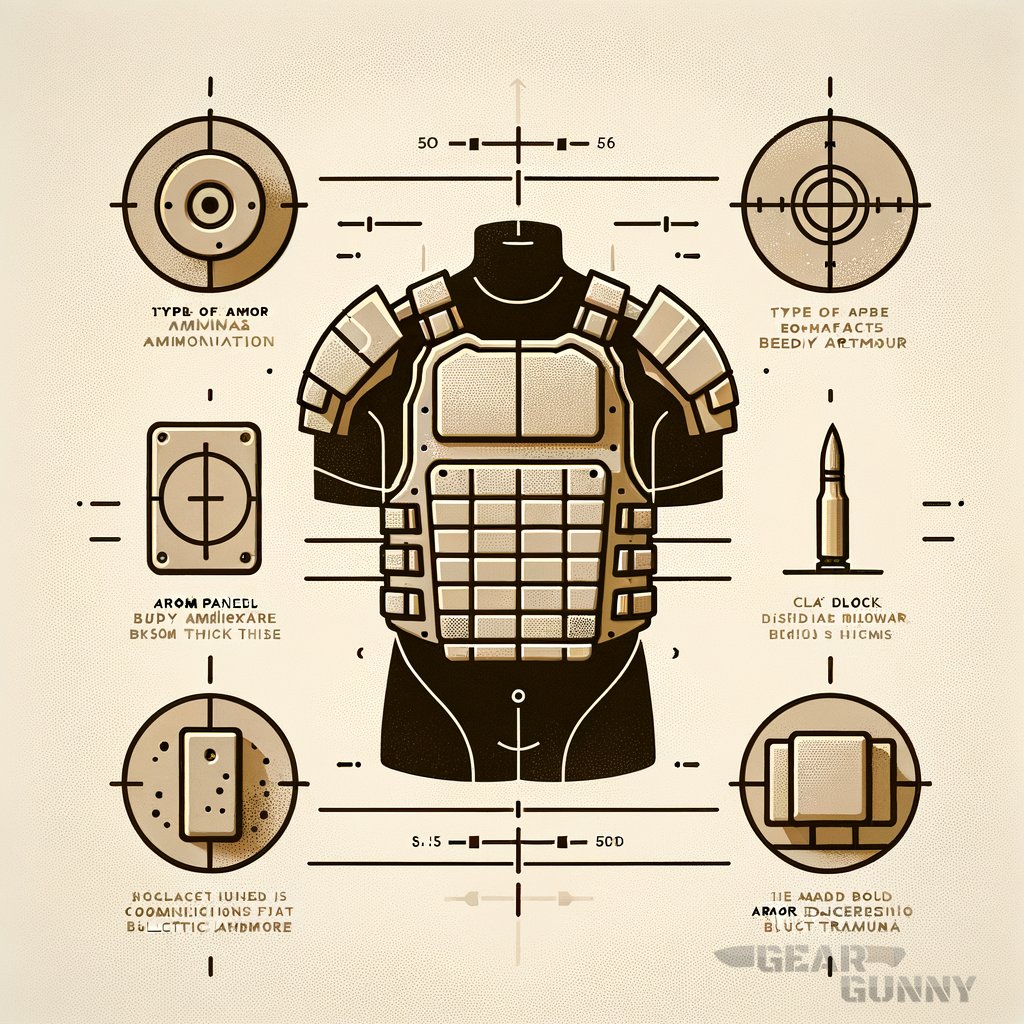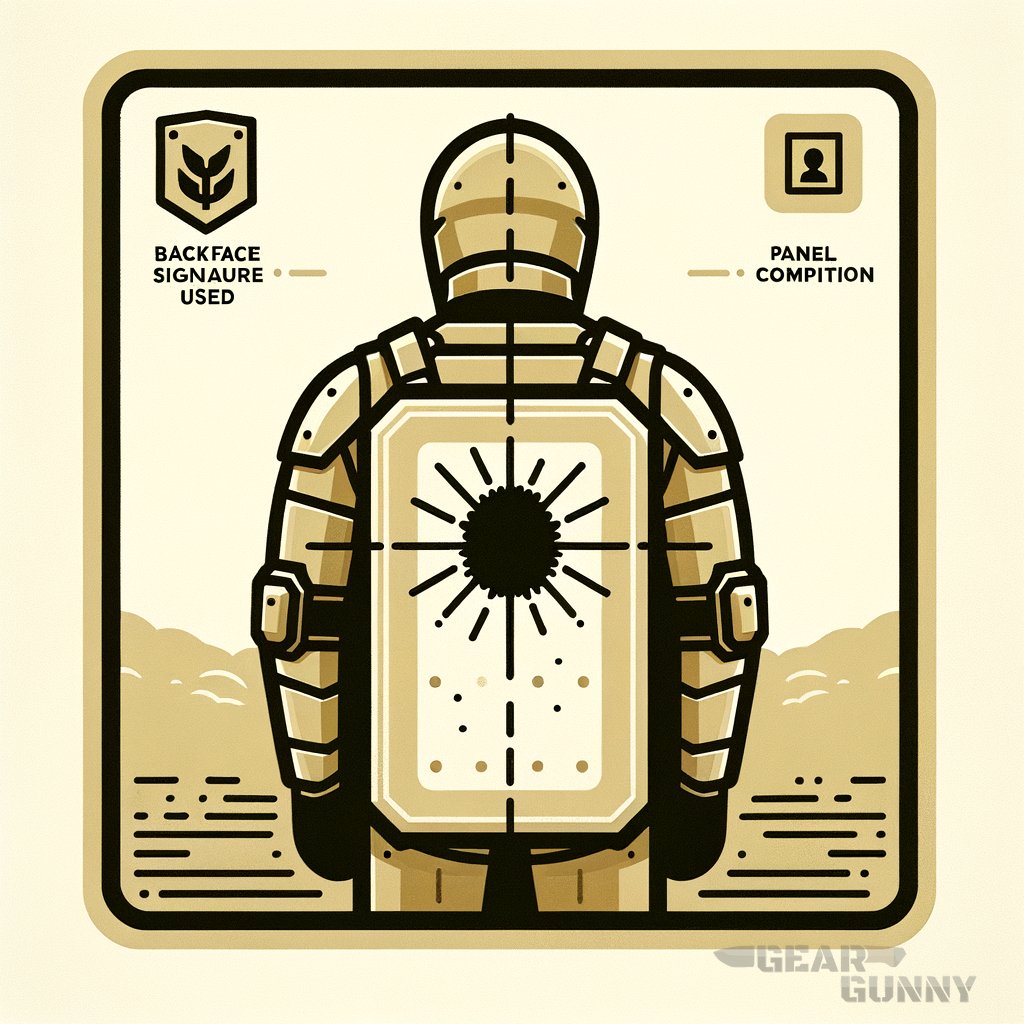Ever wondered how soldiers and law enforcement ensure their body armor can take a hit without injury behind it? How does armor testing work, and what exactly is a “backface signature?” If you’re keen on tactical equipment, knowing about backface signature in armor testing can be crucial. You’ll get the lowdown on what it means and why it matters for anyone relying on ballistic protection.
Get the scoop on the best plate carriers to understand which gear is up to snuff.
Key takeaways
- Backface signature is the indentation on armor post-affect, indicating trauma potential.
- Consistent testing using standard materials is crucial for reliable results.
- Advanced materials are leading innovations in reducing backface signatures.
What is a backface signature in armor testing?
A backface signature is the dent made on the backside of body armor during testing. It’s a critical aspect to consider when evaluating armor’s protective capabilities. Here’s the thing: Even if a bullet is stopped, the force of affect can still cause a blunt trauma injury.

So, in armor testing, a backface signature is the measure of this affect on a clay block simulating the human body behind armor.
To get the nitty-gritty, imagine you’ve got a plate carrier rated to stop a 9mm round. When that round hits in testing, it’s not just about the plate stopping it; it’s about measuring the affect left on the clay as well. Armor with a low backface signature means less force felt by the wearer.
- Key factors in backface signature testing:
- Type of ammunition used
- Distance of the firearm from the armor
- Panel composition and thickness
- The medium behind the armor during tests
Maximizing safety relies heavily on these tests. It’s essential for selecting appropriate gear, so consider exploring the options discussed in our best tactical gear reviews before making a decision.
So, here’s my two cents as someone who’s been around the block, both carrying an M240 in the USMC and decked out in airsoft gear dodging BBs on the weekend – backface signatures are crucial. They’re the difference between walking away and getting knocked down hard, even when the armor doesn’t let a round through.
Remember that one scene from the movie where the hero’s armor stops a sniper bullet, but he’s still thrown backward by the sheer force? That’s your Hollywood-style dramatization of backface signature, magnified for effect, of course.
Truth is, what I’ve seen from my buddies and the chatter at the range, guys end up trusting their gear more when they know it’s been through the wringer and has minimal backface deformity. It’s that confidence in your equipment that can sometimes mean the difference when things get real hot. Dive into the inner workings of an Amtrac to appreciate another aspect of tactical gear and techniques.
5.11 Rush 24 Tactical Backpack

5.11 Rush 24 Tactical Backpack
Understanding backface signature in armor
Backface signature is the indentation or bulge on the backside of body armor when it’s hit by a projectile during testing. The less the backface signature, the better the armor is at dissipating the energy from the bullet’s affect, thus reducing the risk of injury.
What happens during a backface signature test?
In a backface signature test, armor is strapped to a block of clay and shot at with specific rounds. The depth of the indentation in the clay is then measured. This testing is crucial, as it not only shows if the armor can stop a bullet but also how much force the wearer might feel.

Even if a bullet is stopped, the force of the affect can still cause blunt trauma injury. Backface signature testing measures this affect, helping to ensure armor not only stops bullets but also minimizes force felt by the wearer, which can be the difference between walking away and a knockout hit.
- Steps in backface signature testing:
- Selection of standardized clay for consistency
- Preparation of armor and test materials
- Firing rounds at the armor-covered clay block
- Analyzing the depth and breadth of the indentation
Ensuring effective protection, this kind of testing gives a clear indicator of the armor’s performance under real-world conditions. For those looking to buy, make sure you’re looking at gear that’s been rigorously tested, like the selections you’ll find on the list of best tactical gear.
The importance of backface signature results
The results from these tests have a direct affect on the comfort and survivability of armor users. A low backface signature can mean a higher chance of walking away from an affect without serious injury. It’s a crucial consideration for law enforcement and military professionals who rely on their armor to save lives.
- Why you should care about test results:
- They indicate the protection level against blunt force trauma
- Results affect the selection process for duty gear
- Comfort and survivability are directly correlated to backface signature results
Investing in quality armor can save lives, so understanding backface signature results is a top priority, whether you’re in the field or part of the decision-making process for procurement. Insight into the best plate carriers can guide you in making an informed purchase.
Factors that affect backface signature
Not all backface signatures are created equal; they can be affected by multiple factors, such as the type of bullet, the range, and even the temperature during the test. Knowing these factors can help in choosing the right armor for the job.
- Factors influencing backface signature:
- Type of ballistic threat (bullet type)
- Distance and angle of the affect
- Environmental conditions during testing
- The material and thickness of the armor
Every detail counts when it comes to protective gear. That’s why reviewing products with thorough testing against various factors is paramount when selecting something as critical as body armor. Take a look at the gear used by the military for an understanding of what’s being put to the test – gear like tactical boots should also withstand tough conditions.
Armor materials and backface signature
The backface signature can differ significantly depending on the materials used to construct the body armor. Different composites can absorb and distribute the force of the bullet in various ways, leading to varying levels of indentation.
- Materials known to affect backface signature:
- Kevlar and other aramid fibers
- Ultra-high-molecular-weight polyethylene (UHMWPE)
- Ceramic and steel plates
- Hybrid materials combining several of the above
In conducting armor tests, one can appreciate the advancement in materials technology, with newer, lighter materials providing the same or better protection than their predecessors. For insights into the development of materials, take a gander at the discussion on ballistic materials in armor.
Testing armor at different threat levels
Depending on the threat level anticipated, armor is tested against various types of ammunition. High-caliber rounds will lead to greater backface signatures than smaller calibers, reiterating the importance of matching armor to the specific needs of the user.
- Testing according to threat levels involves:
- Assessing standard ammo types for each level
- Understanding the real-world scenarios corresponding to threat levels
- Choosing appropriate armor to test against expected threats
Thorough knowledge and appropriate matching of threat level to gear are critical for those in the crosshairs. As one peels back the layers on this topic, the complexities of choosing the right protection become apparent. Therefore, it’s always advisable to research and use resources such as an explanation of military artillery to gain a fuller understanding of the kind of firepower one might be up against.
Here is a table summarizing the key elements that affect the backface signature during armor testing, providing a at-a-glance view of various factors that should be considered when evaluating the protective capabilities of body armor.
| Material Type | Bullet Type | Test Distance | Environmental Factor |
|---|---|---|---|
| Kevlar | 9mm Full Metal Jacket | 5 meters | Room Temperature |
| Ultra-High-Molecular-Weight Polyethylene (UHMWPE) | .44 Magnum Semi-Jacketed | 5 meters | Room Temperature |
| Ceramic | 7.62x51mm NATO M80 Ball | 15 meters | Controlled Humidity |
| Steel | 5.56x45mm NATO | 15 meters | Variable Temperature |
More armor testing tips
When it comes to armor testing, there’s more than just analyzing backface signatures. To ensure the highest level of protection, here are some supplemental suggestions:
- Always use industry-standard testing materials, like Roma Plastilina clay, for consistency.
- Regularly calibrate testing equipment to ensure accurate results.
- Consider testing armor at various temperatures to assess performance under different conditions.
- Record the test rounds and conditions meticulously to replicate the tests if needed.
- Peruse studies and data from reputable sources to compare backface signature results.
Understanding and choosing body armor can be a complex process, but keeping these tips in mind can make for more informed decisions. When diving deep into tactical gear, don’t forget to gear up with the best tactical gloves for handling any situation with confidence.
Do’s and don’ts of armor testing
Armor testing isn’t just about finding the right materials or the best products on the market. It’s also about following the crucial dos and don’ts that ensure accurate and reliable results.
| Do | Don’t |
|---|---|
| Follow National Institute of Justice (NIJ) standards for armor testing. | Skimp on proper documentation of the tests conducted. |
| Test multiple samples to ensure consistency across the board. | Use outdated or non-standardized testing materials. |
| Consult with experts to interpret the results accurately. | Ignore environmental factors that could affect the results. |
| Use the results to guide real-world decisions and safety protocols. | Rely on a single test to make generalizations about a product. |

Advantages and disadvantages of armor testing
Armor testing is an integral part of ensuring the safety and effectiveness of personal protective equipment. It has its set of pros and cons to consider, especially when involved in selecting or manufacturing armor.
Advantages
- Establishes a quantifiable measure of armor effectiveness and safety.
- Helps identify the best materials and designs for specific threats.
- Sets industry benchmarks and promotes continuous improvement of armor technology.
- Increases user confidence knowing the gear has been rigorously tested.
Disadvantages
- Can be costly and resource-intensive, creating a higher price point for consumers.
- Tests may not replicate every possible real-world scenario encountered by armor wearers.
- The focus on passing preset standards may limit innovation or more practical, real-world solutions.
If you are a visual learner, check out this video titled ‘Ceramic Body Armor Test: PART 2 ” BackFace Signature” in CLAY’
Frequently asked questions (FAQ)
How usually should armor be tested for backface signature?
Armor should be tested for backface signature periodically, especially if it’s part of an active duty rotation or has been subjected to affect. Manufacturers typically conduct extensive tests during development, but operational departments may perform more tests depending on their protocol and after any incident that could compromise the armor’s integrity.
Can backface signature testing predict actual performance in the field?
While backface signature testing is conducted in a controlled environment and provides a standardized measure of armor performance, it may not account for all the variables present in actual combat situations. However, it is one of the best methods available for predicting effectiveness and ensuring safety standards are met.
What innovations are being developed to reduce backface signatures?
Ongoing research into new materials and constructions aims to reduce backface signatures in armor. Innovations include advanced fibers, new composite materials, and technologies like non-Newtonian fluids, which remain flexible under normal conditions but harden upon affect, dissipating energy more efficiently.
Final thoughts
Understanding backface signature in armor testing is essential for anyone involved with tactical gear and protective equipment. It’s a critical indicator of how well armor can potentially save lives by not just stopping a bullet, but by also reducing the risk of blunt trauma behind it. With advancements in technology and a steady focus on improving materials, the goal is always to enhance the safety of those who serve on the front lines.
Has this deep dive into backface signature given you a new perspective on the importance of armor testing? Did I cover everything you wanted to know? Let me know in the comments section below — I read and reply to every comment.
If you found this article helpful, share it with a friend, and check out my full blog for more tips and tricks on tactical and survival skills. Thanks for reading and stay sharp out there, devil dogs.















